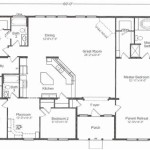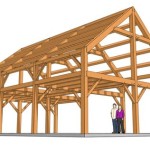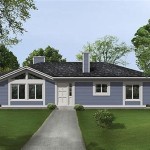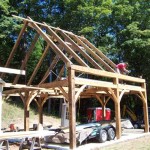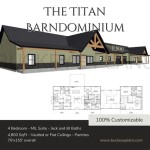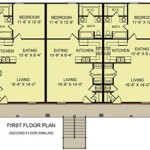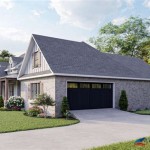Modern Hill Country Home Plans: A Synthesis of Tradition and Innovation
Modern Hill Country home plans represent a distinct architectural style that blends traditional Texas vernacular with contemporary design principles. Originating in the Texas Hill Country, this architectural movement is characterized by its adaptability to the region's unique topography, climate, and natural resources. These plans prioritize functionality, sustainability, and aesthetic integration with the surrounding landscape, offering a unique residential experience.
The evolution of Hill Country architecture can be traced back to the early German and Czech settlers who adapted their building techniques to the readily available materials and the specific environmental conditions of the region. These early structures often featured limestone exteriors, metal roofs, and deep porches designed to provide shade from the intense Texas sun. Modern Hill Country home plans retain many of these core elements while incorporating modern technologies, materials, and design concepts.
The defining characteristic of modern Hill Country architecture is its emphasis on natural light and ventilation. Large windows, strategically placed to capture prevailing breezes, are common features. Open floor plans further enhance the flow of air and light throughout the home, creating a comfortable and inviting living space. The use of natural materials, such as wood and stone, both on the exterior and interior, reinforces the connection to the surrounding environment.
Key Elements of Modern Hill Country Design
Understanding the specific components that define modern Hill Country home plans is crucial to appreciating the nuances of this architectural style. Several key features contribute to the overall aesthetic and functional appeal of these homes.
Material Palette: The material palette is a cornerstone of modern Hill Country design. Limestone remains a prevalent choice for exterior cladding, chosen for its durability, thermal properties, and aesthetic appeal. Other commonly used materials include wood siding, metal roofing, and natural stone accents. The combination of these materials creates a harmonious blend of textures and colors that complements the natural landscape. Concrete is also increasingly used, often stained or polished to provide a modern, durable, and low-maintenance surface.
Roofing Styles: Metal roofing is a defining characteristic, offering durability, longevity, and reflectivity, reducing heat gain during the hot Texas summers. Common roofing styles include standing seam metal roofs and corrugated metal roofs. The pitch of the roof is often moderate, allowing for efficient water runoff while maintaining a clean, modern profile. In some instances, green roofs are incorporated, further enhancing the home's connection to nature and improving insulation.
Outdoor Living Spaces: A hallmark of modern Hill Country design is the seamless integration of indoor and outdoor living spaces. Deep porches, patios, and decks extend the living area and provide opportunities for relaxation and entertainment. Outdoor kitchens, fireplaces, and seating areas are frequently incorporated into these spaces, creating comfortable and functional outdoor environments. Landscape design plays a critical role in enhancing the outdoor living experience. Native plants, drought-resistant landscaping, and strategically placed trees provide shade, privacy, and visual appeal.
Sustainability Considerations in Modern Hill Country Plans
Sustainability is an increasingly important factor in modern Hill Country home design. Homeowners and architects alike are prioritizing energy efficiency, water conservation, and the use of sustainable materials.
Energy Efficiency: Modern Hill Country homes often incorporate energy-efficient features such as high-performance windows, superior insulation, and energy-efficient HVAC systems. Solar panels are also becoming increasingly popular, offering a renewable energy source and reducing reliance on the power grid. Passive solar design principles are often employed to maximize natural light and ventilation, reducing the need for artificial lighting and air conditioning. Proper orientation of the home is crucial for optimizing solar gain during the winter and minimizing heat gain during the summer.
Water Conservation: Water conservation is particularly important in the arid climate of the Texas Hill Country. Rainwater harvesting systems are frequently incorporated to collect and store rainwater for irrigation and other non-potable uses. Xeriscaping, a landscaping technique that uses drought-resistant plants, is another common approach to minimize water consumption. Low-flow plumbing fixtures and efficient irrigation systems further reduce water usage.
Sustainable Materials: The selection of sustainable materials is a key aspect of environmentally responsible building practices. Recycled content materials, such as recycled steel and reclaimed wood, are often used. Locally sourced materials are also preferred, reducing transportation costs and supporting local economies. The use of non-toxic and low-VOC (volatile organic compound) materials improves indoor air quality and reduces the environmental impact of the building process.
Adapting to the Landscape: Site-Specific Design
A defining characteristic of modern Hill Country home plans is their adaptability to the unique topography and natural features of the building site. Site-specific design ensures that the home is not only aesthetically pleasing but also functional and sustainable. This involves careful consideration of factors such as slope, drainage, vegetation, and views.
Minimizing Site Disturbance: Minimizing site disturbance is a primary goal in site-specific design. This involves preserving existing trees, natural vegetation, and natural drainage patterns. The home's foundation is carefully designed to minimize excavation and grading, reducing erosion and preserving the natural contours of the land. Retaining walls are often used to stabilize slopes and create level building pads, while minimizing the impact on the surrounding environment.
Harnessing Natural Resources: Site-specific design also involves harnessing natural resources such as sunlight, wind, and water. The orientation of the home is carefully considered to maximize solar gain during the winter and minimize heat gain during the summer. Prevailing winds are used to provide natural ventilation, reducing the need for air conditioning. Rainwater harvesting systems are integrated into the design to collect and store rainwater for irrigation and other non-potable uses.
Maximizing Views: The Texas Hill Country is renowned for its stunning views, and modern Hill Country home plans are designed to maximize these vistas. Large windows, strategically placed balconies, and open floor plans provide panoramic views of the surrounding landscape. Outdoor living spaces are often oriented to capture the best views, creating comfortable and inviting areas for relaxation and entertainment. The placement of the home on the site is carefully considered to ensure that it blends seamlessly with the natural landscape and does not obstruct views from neighboring properties.
Modern Hill Country home plans provide a harmonious blend of tradition and innovation, creating residences that are both aesthetically pleasing and functionally efficient. By embracing sustainable design principles, adapting to the unique characteristics of the building site, and prioritizing the integration of indoor and outdoor living spaces, these homes offer a unique and compelling residential experience that reflects the spirit and beauty of the Texas Hill Country. The ongoing evolution of this architectural style promises to continue shaping the landscape with innovative and sustainable designs that celebrate the region's unique environmental and cultural heritage.

Custom House Plans Hill Country

Hill Country Contemporary Archived Projects Portfolio Olson Defendorf Custom Homes

100 Best Hill Country House Plans Ideas In 2024 Homes

Modern Hill Country House Plan With Open Air Upstairs Balcony 430050ly Architectural Designs Plans

Single Story Contemporary 4 Bedroom Hill Country Home For A Wide Lot With Courtyard Floor Plan In 2024 Homes House Plans Modern Style

Hill Country Transitional B E Schafer Custom Homes

House On The Hill By James D Larue Architecture Design

Hill Country Transitional B E Schafer Custom Homes

Plan 80801 Hill Country With Wrap Around Porch And H

Hill Country Custom Home Mediterranean Exterior Austin By Dawn Hearn Interior Design Houzz

